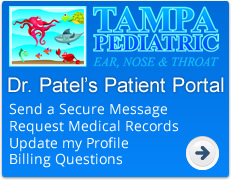|
|
 |
|||||||
Tracheostomy
General anesthesia is used. The neck is cleaned and draped. Surgical cuts are made to expose the tough cartilage rings that make up the outer wall of the trachea. The surgeon then creates an opening into the trachea and inserts a tracheostomy tube. Why the Procedure is PerformedA tracheostomy may be done if you have:
RisksThe risks for any anesthesia are:
The risks for any surgery are:
Additional risks include:
After the ProcedureIf the tracheostomy is temporary, the tube will eventually be removed. Healing will occur quickly, leaving a minimal scar. Occasionally a stricture, or tightening, of the trachea may develop, which may affect breathing. If the tracheostomy tube is permanent, the hole remains open and may require surgical closure when no longer needed. Outlook (Prognosis)Most patients require 1 to 3 days to adapt to breathing through a tracheostomy tube. It will take some time to learn how to communicate with others. Initially, it may be impossible for the patient to talk or make sounds. After training and practice, most patients can learn to talk with a tracheostomy tube. Patients or family members learn how to take care of the tracheostomy during the hospital stay. Home-care service may also be available. Normal lifestyles are encouraged and most activities can be resumed. When outside, a loose covering (a scarf or other protection) for the tracheostomy stoma (hole) is recommended. Patients must adhere to other safety precautions regarding exposure to water, aerosols, powder, or food particles as well. >> Back to Larynx & Voice Conditions
|
| © Tampa Ear, Nose & Throat Associates | Otolaryngology | 3000 Medical Park Drive, Suite 200, Tampa, FL 33613 | Disclaimer Privacy & Terms of Use Meet Our Staff | Our ENT Specialties | Conditions & Treatments | Referring Physicians | For Patients | Video Education & News | Appointments & Locations Allergies | Larynx Voice | Nose & Sinus | Office Based Procedures | Pediatric ENT | Snoring & Sleep Apnea Advanced Technology | Cerumen Removal | Septoplasty | Sinusitis | Swimmers Ear | Tinnitus | Tonsils & Adenoids | Vertigo | Thyroid & Parathyroid Powered by MedCoData |

 A tracheostomy is a surgical procedure to create an opening through the neck into the trachea (windpipe). A tube is usually placed through this opening to provide an airway and to remove secretions from the lungs. This tube is called a tracheostomy tube or trach tube.
A tracheostomy is a surgical procedure to create an opening through the neck into the trachea (windpipe). A tube is usually placed through this opening to provide an airway and to remove secretions from the lungs. This tube is called a tracheostomy tube or trach tube.